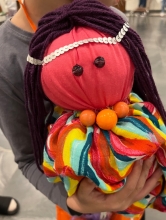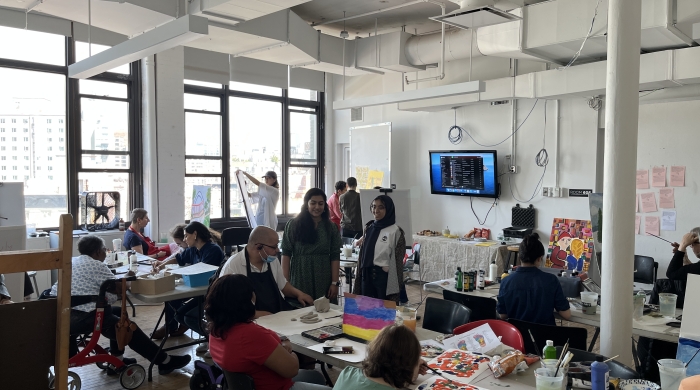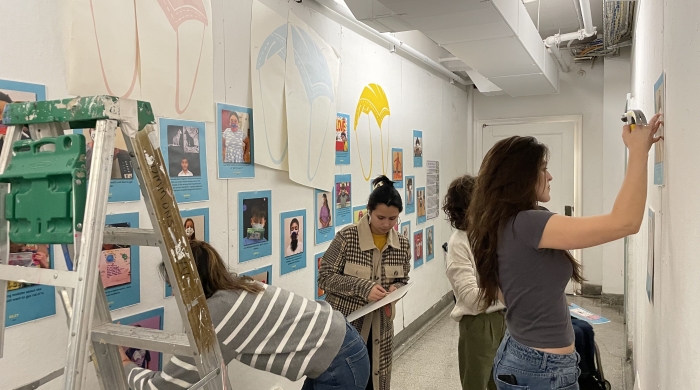NYU faculty, students, and staff have risen to the challenge to help migrants and asylum seekers in New York City.
More than 130,000 people seeking asylum have arrived in New York City since the spring of 2022, looking to start a new life in the United States. In a city known for its statue in the harbor welcoming immigrants and with a population that speaks more than 200 languages, this influx has nevertheless stretched the Big Apple’s resources thin – overwhelming shelters, schools, and immigration systems. Many of the migrants are families with young children, who face a range of difficulties from the trauma of a difficult journey to the United States to unstable housing and language barriers in their new schools.
Throughout 2023, NYUers from across the University have responded. In collaboration with New York City agencies, they have volunteered their knowledge and skills in the rush to accommodate and support the new residents.
“We're honored to be able to contribute what's, perhaps, our most valuable resource – the time and talent of our students, our faculty, and our staff to this critical work,” said Gigi Dopico, NYU’s interim provost, at a recent event with the New York City Mayor’s Office.
Here is one way that NYU Steinhardt is making a difference.
The Healing Power of Art
NYU Steinhardt’s Art Therapy program has been facilitating art therapy sessions for asylum-seeking parents and children living in emergency shelters in Manhattan, Queens, and the Bronx. Six to eight art therapy master’s degree students spend two hours every Saturday morning at one of the shelters, working with children and their families to make dolls, pillows, beaded bracelets, and other art projects. The sessions are held in the cafeteria areas of the shelters and are attended by 40 to 50 people.

Dolls are among the "comfort objects" that can be created in art therapy sessions.
NYU students and faculty typically visit shelters where social services have not yet been established, and so their mission is to be welcoming and attempt to create some normalcy within the family dynamic, explained Marygrace Berberian, clinical assistant professor of art therapy and director of the Graduate Art Therapy program. Despite holding weekly workshops since early in the year, they have only visited the same shelter twice.
The sessions offer a distraction from the trauma the families have experienced, space to work through their emotions, and time for parents to support each other, explained Seung Yeon Lee, clinical assistant professor in Graduate Art Therapy. Lee said they chose projects that yield “comfort objects,” such as pillows, dolls, and bracelets, that can be shared with family and help with recovery. This month the projects will have winter themes – trees and gift boxes and snowflakes, said Lee.
In addition to working directly with the asylum seekers on Saturday mornings, Steinhardt students work in schools where the children are enrolled, and Berberian offers school-based workshops for parents to help them recognize their children’s response to trauma and how to address these responses.
“They are traumatized. They are fearful that they will be tracked down,” Berberian said of the families who attend the Saturday sessions. “They remain terrified.”
Learn more about the NYU community's efforts to support asylum seekers.
Related Articles
Embodying Healing through Art Therapy
NYU Steinhardt’s Art Therapy program blends clinical efficacy with holistic wellness for communities across New York City — and the world.
Graduate Art Therapy Program Expands Collaboration with the Rubin Museum
Based on past success, the Graduate Art Therapy program has expanded programming at the Rubin Museum, offering free art therapy sessions for the public.
Art Therapy Program Students and Faculty Display the Parachute Project in the Barney Building
The Parachute Project, initiated by the art therapy program, is a contribution to the global effort called for by UNICEF to understand the impact of the pandemic on children and adolescents.



